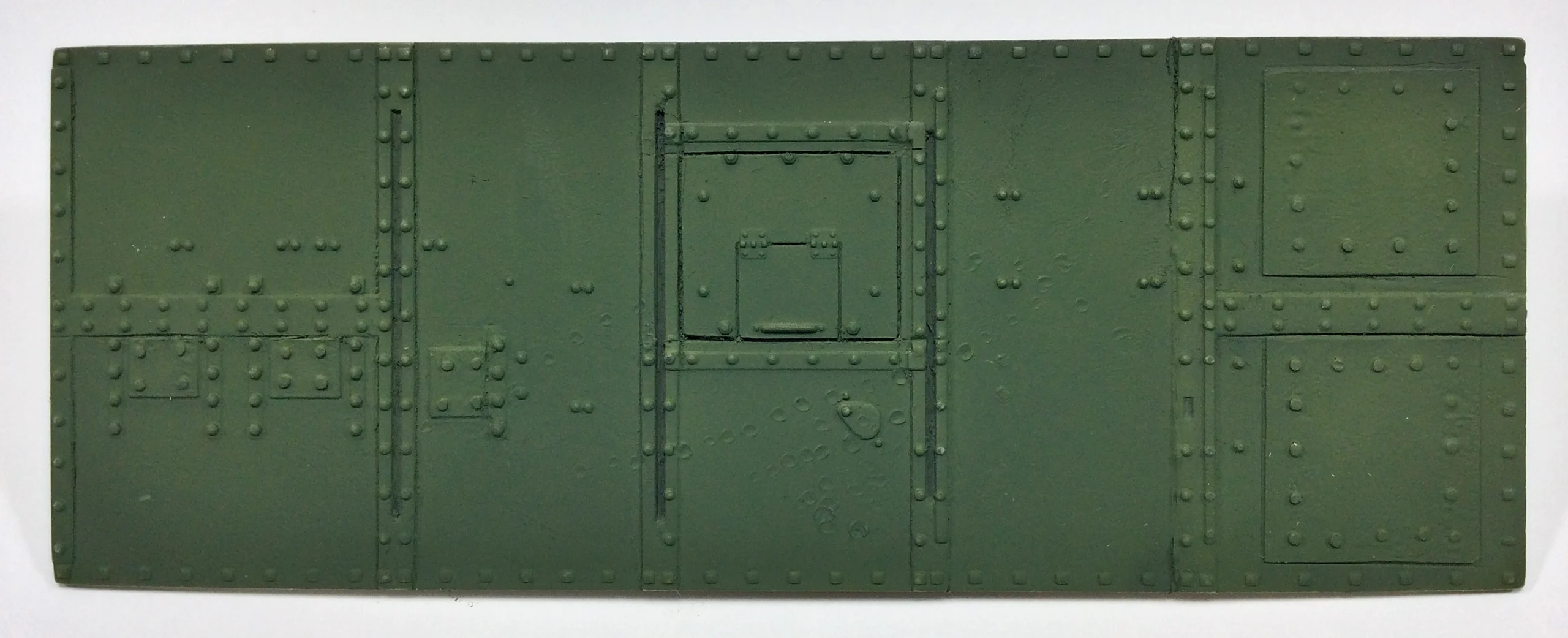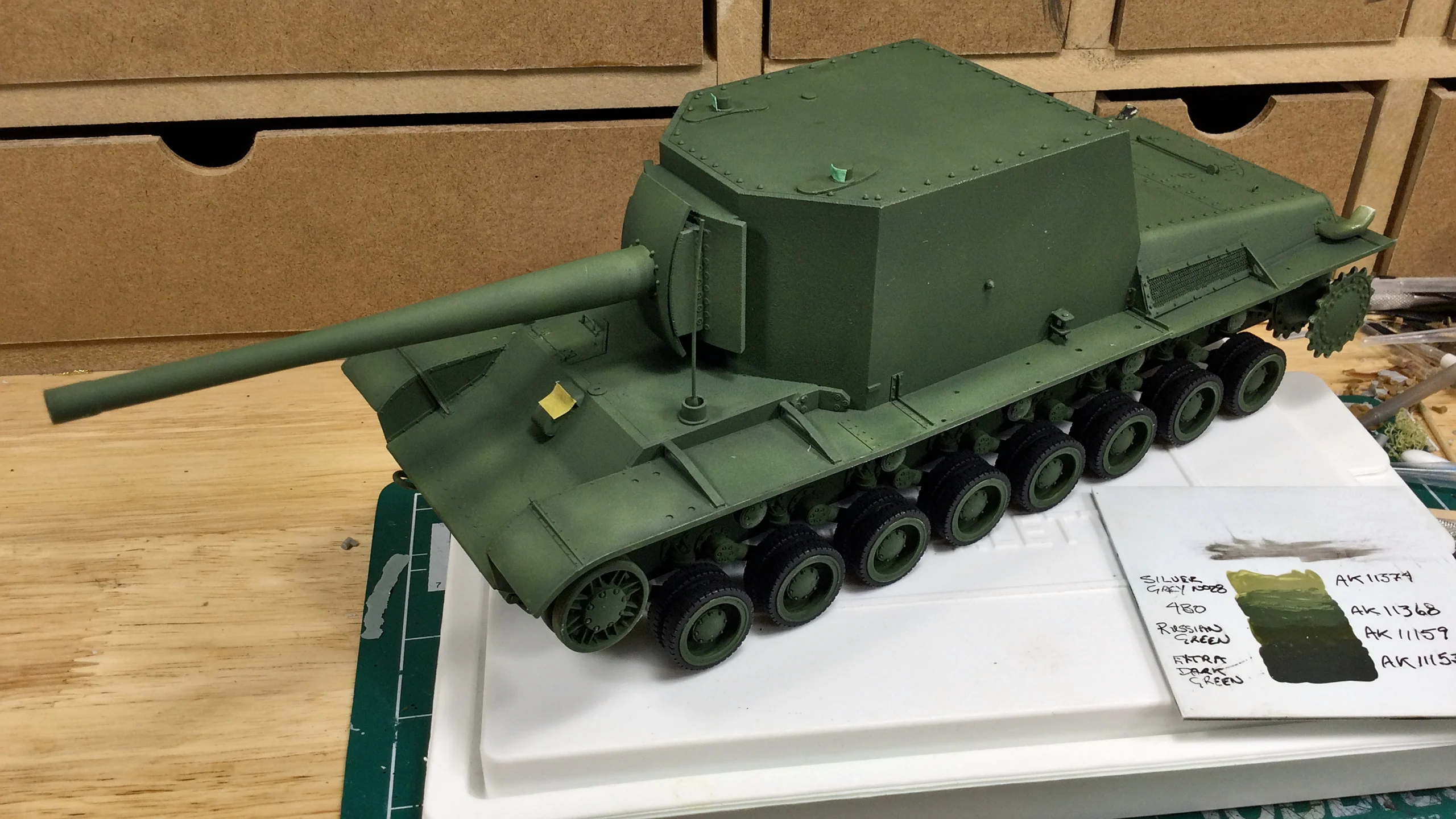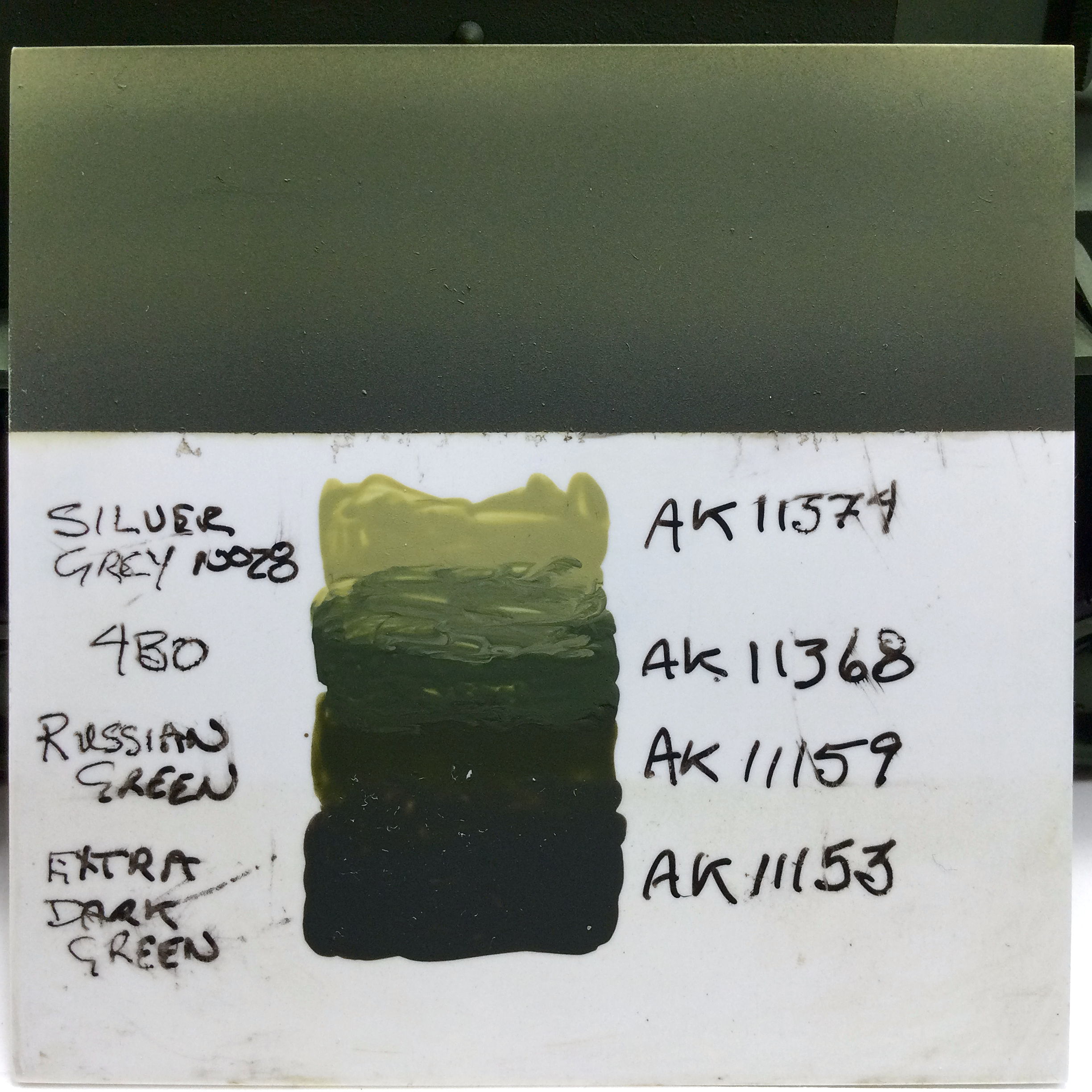Airbrushing 3G Acrylic Paint

Skill Level: Beginner to Advanced
No Tip Dry: The Gold Standard of Water-Soluble Acrylic Paint
In this tutorial, beginners to advanced modellers will learn how to use AK Interactive 3rd Generation Acrylics for superior results. 3G Acrylics are a modern, water-soluble, hybrid acrylic paint, capable of accomplishing outstanding results when used correctly.
In short, 3G Acrylics can do things lacquers and enamels can’t. The paint has much greater working latitude.
Paint Types: Important Airbrush Use Consideration
The term Acrylic Paint is a generic term used to describe acrylic resin, the main ingredient found in paint. The two types of acrylic paint are water-soluble and solvent-soluble.
Water is technically a solvent, water-based acrylic resin, medium, and pigments are held in suspension. Solvent-based acrylic paints, such as lacquers and enamels, contain dissolved acrylic resin, binders, and carriers. Constituent components in all paint will separate, requiring thorough mixing before use.
When using an aérographe, careful consideration of what is going on in the paint cup is necessary. Lacquer accretion forming on the paint cup reactivates to homogeneously dissolve with each paint cup refill. In doing so, they don’t typically create any airbrush plugging issues unless the wrong thinner is used or cured lacquer fleck is introduced into the paint cup from the paint pot cap or threads.
It’s important to note, when compared to lacquers, all water-based acrylic accretion continues with successive solidifying layers forming on the paint cup wall. During extended airbrush use with multiple paint cup refills, at some point, accretion accumulation on the paint cup wall will break away and clog our airbrush if we are not careful. All water-based acrylics form an insoluble accretion ring on the paint cup wall during extended use.
🛑 Pro-tip: Mechanically mixing repeated refills of water-soluble acrylic paint of any brand in the airbrush paint cup using a paintbrush or stir stick will guarantee dislodged shreds plugging your airbrush.
💡 Pro-tip: Prior to refilling the airbrush paint cup rinse the cup clear by back bubbling using distilled water and carefully wipe away any solidifying acrylic paint from the paint cup wall. Always back bubble and dump out the paint cup contents several times to prevent any congealed paint in the paint channel from obstructing nozzle paint flow. Back flushing will help keep your airbrush from becoming plugged with solidifying acrylic resin. This applies to all water-based acrylics.
Maximizing 3G Acrylic Performance
To get the most out of this fine acrylic paint, there are a few basics to cover when using 3G Acrylics.
- For brushwork, use distilled water.
- UN wet palette is a prerequisite when using water-based acrylics for extended brushwork.
- Familiarize yourself and learn how to use 3G Retarder; Gloss, Matte, Metal, and Glaze Mediums.
- For airbrush performance, distilled water works, however, the best airbrush results are achieved using AKI 3G Acrylic Paint Thinner AK11500
- To clean paint brushes and flush out the airbrush and wipe clean the paint cup, distilled water works well. To ensure all acrylic paint is removed from the airbrush, use the new formula AKI 3G Perfect Cleaner AK11505
🗜️ Pro-tip: When the above-mentioned products are used, a trouble-free painting experience awaits.
🛑 To avoid airbrush fouling or plugging, DIY thinners, Isopropyl, lacquer alcohol-based thinners and other airbrush cleaners are incompatible and need to be avoided.
💡⚗️ Keep in mind, that distilled water and tap water are light years apart. Distilled water has with no impurities. Water is heated, and then the steam cooled again to product water with no impurities.
Gradient Shading & Translucent Blends

3G Blends and Transitions Test Spray Sheet

Soviet Colour Set: AK Interactive Acrylic 3rd Gen Modulation 4BO Russian Green Paint Set 11639
3G Acrylic Paint Airbrush Thinning Ratios
Reduce paint to suit your preferences and desired outcomes.
- Colours: 1:1 – 7:3 parts thinner to paint ratio
- Metallics: 8:2 parts thinner to paint ratio
- When using 3G Retarder, Gloss, Matte, Metal, and Glaze Mediums, add prior to thinning.
Always test ratios prior to applying to project. When using a Grex GMAC Valve, adjust airflow for desired nozzle dispersal pattern. It should be pointed out that a MAC Valve regulates airflow and subsequently fluid flow using the Venturi Effect. It does not regulate air pressure.
Air Pressure Setting
- Air pressure 1.5 bar (22 psi).
- For absolute control over airbrush airflow, spray patterns and fluid dynamics, a MAC Valve is necessary.
🧰 Pro-tip: When adjusting the pressure regulator on the air compressor, adjust the air pressure dial while the pump is running. Adjusting the air pressure regulator when the pump is off produces false pressure settings. For absolute airbrush control at the nozzle, for both air and fluid dynamics, use a MAC Valve.
How to Measure Paint Use
Drops & Millilitres: 20 drops = 1 ml
Paint and thinner ratios mixed by approximate amounts and guesstimates are perfect criteria for inconsistent results. Should something go wrong, there is no methodology to problem-solve.
Drop counting, individually or by volume.
Knowing 20 drops equals 1 ml, it’s super easy to make consistent small or large batches of paint to thinner or paint colour to paint colour mix ratios systematically every time.
🧰 Pro-tip: Proper calibration of paint to thinner ratios allows absolute control over paint characteristics. It’s especially important when using an airbrush.
Paint Application: Light Overlapping Coats
3G Acrylics are beautiful to work with because it shrinks down onto the surface as it dries, preserving fine detail. Apply in light, overlapping coats of 50/50 or more for uniform coverage.
With each successive light layer, colour is built up to the desired opacity. Once the desired opacity appears, stop applying paint… more is not better.
Airbrush Nozzle Pattern Overlay
With each successive spray stroke, overlay, extend over and cover a part of the previous paint stroke by at least 50% to prevent irregular lighter and darker colour banding.
Translucent and Opaque Colours
Transparent or see through, sheer colours and opaque, solid colours, we can’t see through, require a different number of coats to achieve the desired outcome.
🧰 Pro-tip: Light successive thin coats produce a superior finish over a heavy coat. Always test on a spray sheet to assess paint and spray characteristics.
💡 For example, apply successive layers on your test spray sheet, building up opacity to obtain the look you want to achieve. Rather than guessing how much paint to put down, you know precisely the coat layer intensities and how many are required to achieve the look.
Applying Lacquer and Enamel over 3G Acrylics
When properly applied, 3G Acrylics produce a strong finish capable of withstanding masking tape without lifting paint away from the surface.
To start with, kit surfaces need to be wiped down with Isopropanol Alcohol 70% to remove any mould release or body oils left on the surface during handling and the building process. By doing so, we are assured of superior bonding of the primer and subsequent base coat to styrene. Ensure the surface is dust free before commencing airbrushing.
James Wooldridge is An enthusiastic scale modeller, researcher, amateur historian, and contributor to scale modelling sites, including Scalemates. He is an active and progressive Facebook Group Expert, Presenter, and Scale Modelling Club Video Host.
